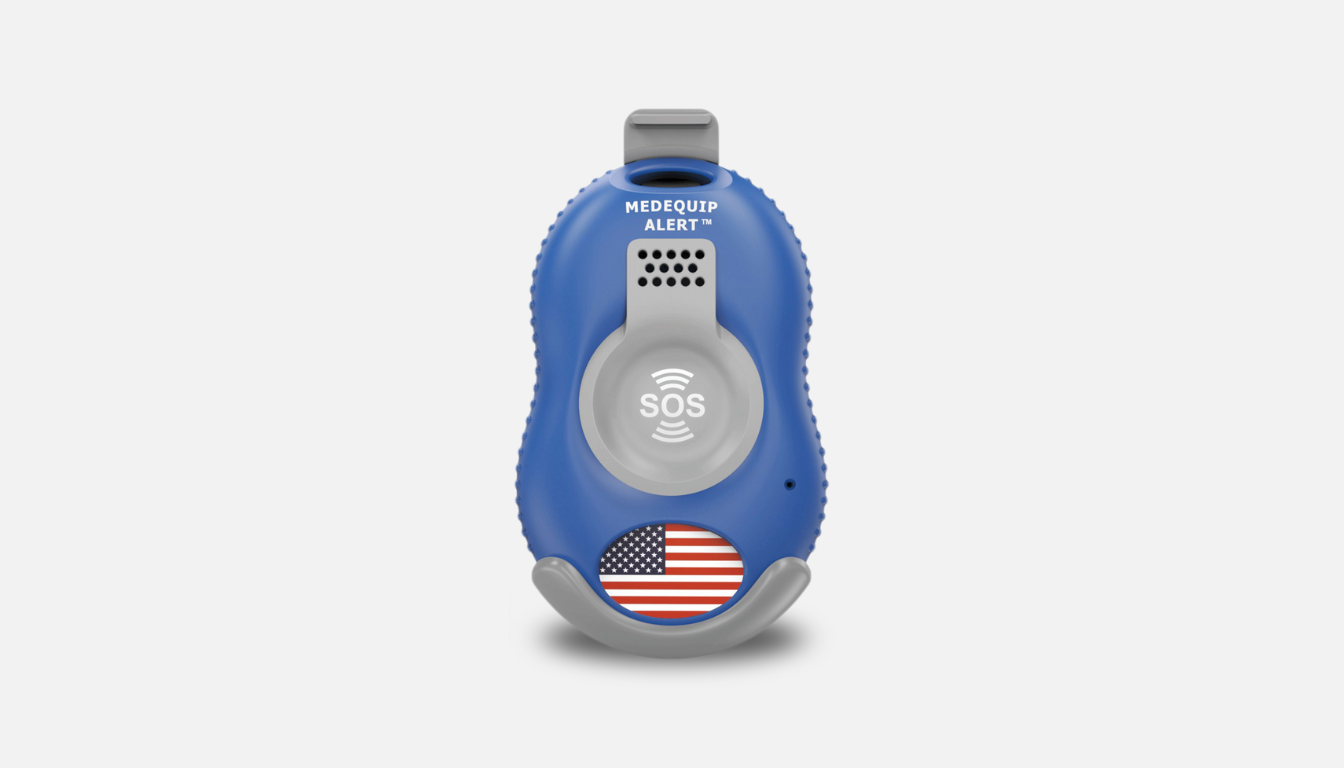
The Lifesaving Importance of Medical Alert Devices for the Elderly
As people age, the risks to their health and safety can increase significantly. From chronic illnesses and medication management t...

Seniorcenters.com is a free resource helping seniors and senior centers across America. Learn about our editorial processes.
Navigating healthcare in your senior years can feel like deciphering a complex puzzle, and few pieces are as crucial, or as confusing, as prescription drug coverage. For many seniors and their families, understanding Medicare Part D is essential for managing health, maintaining financial stability, and ensuring access to vital medications. This comprehensive guide aims to demystify Medicare Part D, breaking down its components, explaining the key terms you need to know, and providing a practical, step-by-step approach to help you choose the plan that best fits your unique needs. We’ll cover everything from the basics of what Part D is, to navigating enrollment periods, and even understanding the infamous “donut hole.” Our goal is to empower you with the knowledge to make informed decisions, ensuring your health and peace of mind.
Medicare Part D is the component of Medicare that helps cover the cost of prescription drugs. It was established to help seniors afford their medications, which can otherwise be a significant financial burden. Unlike Original Medicare (Parts A and B), which are provided directly by the government, Part D plans are offered by private insurance companies approved by Medicare. This means there are many different plans available, each with its own costs, covered drugs, and rules.
You can get Medicare Part D in one of two ways:
It’s important to understand that if you have Original Medicare and want drug coverage, you must actively choose and enroll in a Part D plan. If you have a Medicare Advantage Plan, check if it includes drug coverage, as many do.
Selecting the appropriate Medicare Part D plan isn’t just about finding the cheapest premium; it’s about optimizing your health outcomes and protecting your finances. The wrong plan could lead to higher out-of-pocket costs, limit your access to necessary medications, or even result in penalties.
Consider these vital reasons why your choice is so important:
Making an informed decision about your Part D plan is a crucial step in effective medication management and overall financial well-being in retirement.
Before diving into how to choose a plan, it’s essential to familiarize yourself with some common Medicare Part D terminology. These terms directly impact your out-of-pocket costs.
| Term | Definition | Impact on You |
|---|---|---|
| **Premium** | The monthly fee you pay to the insurance company for your Part D plan. | A fixed monthly cost, regardless of medication use. |
| **Deductible** | The amount you must pay for your prescriptions out-of-pocket before your plan starts to pay. | You pay 100% of drug costs until this amount is met. Some plans have a $0 deductible for certain tiers of drugs. |
| **Formulary** | A list of prescription drugs covered by a plan. Drugs are typically grouped into tiers, with different costs for each tier. | Ensures your specific medications are covered and helps you understand their cost-sharing. |
| **Tiered Pricing** | Drugs on the formulary are categorized into different tiers (e.g., Tier 1: Preferred Generics, Tier 2: Generics, Tier 3: Preferred Brands, Tier 4: Non-Preferred Brands, Tier 5: Specialty Drugs). Lower tiers have lower co-payments/co-insurance. | Your out-of-pocket cost depends on the tier of your medication. |
| **Co-payment (Co-pay)** | A fixed amount you pay for a covered prescription drug after you’ve met your deductible. | A set amount you pay each time you fill a prescription. |
| **Co-insurance** | A percentage of the cost of a covered prescription drug you pay after you’ve met your deductible. | A percentage-based cost, often for higher-tier or specialty drugs. |
| **Initial Coverage Limit** | The total amount that you and your plan pay for covered drugs. Once this limit is reached, you enter the “donut hole.” | Determines when you move from initial coverage to the coverage gap. |
| **Coverage Gap (Donut Hole)** | A temporary limit on what the drug plan will cover for drugs. Not all plans have a gap, and it closes once you spend a certain amount out-of-pocket. | You pay a higher percentage of drug costs during this phase until you reach catastrophic coverage. |
| **Catastrophic Coverage** | Once your out-of-pocket spending reaches a certain threshold, your plan pays almost all of your drug costs for the remainder of the year. | Provides significant financial relief for very high drug costs. |
Choosing a Part D plan can feel overwhelming with so many options. By following these steps, you can systematically narrow down your choices and find a plan that aligns with your health and financial needs.
The very first and most critical step is to compile a complete and accurate list of all your prescription medications. This includes:
This list will be your most valuable tool when comparing plans, as it will help you determine which plans cover your specific drugs and at what cost. It’s also a good idea to discuss your current and anticipated medication needs with your doctor during your essential health screenings.
Do you prefer to fill your prescriptions at a local retail pharmacy, or are you comfortable with mail-order pharmacies?
Many Part D plans have preferred pharmacy networks that offer lower co-pays or co-insurance. Make sure your preferred pharmacy is in the network of any plan you consider.
The official Medicare Plan Finder tool on Medicare.gov is your most powerful resource for comparing plans. It’s free, unbiased, and provides personalized cost estimates.
Here’s how to use it effectively:
The tool can seem daunting at first, but taking your time and accurately entering your information will yield the most precise results.
Once you have the results from the Medicare Plan Finder, it’s time to compare the plans side-by-side. Look beyond just the lowest premium.
Consider these factors:
Your personal circumstances play a significant role in which plan is best.
The “donut hole” or coverage gap is one of the most confusing aspects of Medicare Part D. It’s a temporary limit on what your drug plan will pay for covered drugs. Not all plans have a gap, and it closes once you’ve spent a certain amount out-of-pocket.
**How it Works:**
1. **Deductible Phase:** You pay 100% of your drug costs until you meet your plan’s deductible (if it has one).
2. **Initial Coverage Phase:** After the deductible, your plan pays its share, and you pay your co-payment or co-insurance for covered drugs. This phase continues until the total cost of your drugs (what you and your plan have paid combined) reaches a certain limit (the Initial Coverage Limit).
3. **Coverage Gap (Donut Hole):** Once you hit the Initial Coverage Limit, you enter the coverage gap. In 2024, once you and your plan have spent $5,030 on covered drugs, you enter the donut hole. While in the donut hole, you pay 25% of the cost for both generic and brand-name drugs. The manufacturer discount for brand-name drugs helps reduce this cost.
4. **Catastrophic Coverage:** After your out-of-pocket spending (including what you paid in the deductible, initial coverage, and the donut hole, plus the manufacturer discount for brand-name drugs in the donut hole) reaches a certain threshold ($8,000 in 2024), you exit the donut hole and enter catastrophic coverage. In this phase, you pay a very small co-payment or co-insurance for your drugs for the rest of the year.
While the donut hole has been significantly reduced due to healthcare reform, it can still be a challenging period for seniors with high medication costs. When comparing plans, consider how quickly you might reach the donut hole and what your costs would be during that phase.
Understanding the enrollment periods is crucial to ensuring continuous and appropriate coverage.
| Enrollment Period | When It Happens | What You Can Do |
|---|---|---|
| **Initial Enrollment Period (IEP)** | Begins 3 months before your 65th birthday month, includes your birthday month, and extends 3 months after. (Total 7 months) | Sign up for Medicare Part D for the first time. Avoids late enrollment penalties. |
| **Annual Enrollment Period (AEP)** | October 15 to December 7 each year. | Switch Part D plans, enroll in a Part D plan if you don’t have one, or switch from Original Medicare to Medicare Advantage (or vice versa). New coverage starts January 1. This is your annual opportunity to re-evaluate. |
| **Medicare Advantage Open Enrollment Period (MA OEP)** | January 1 to March 31 each year. | If you’re in a Medicare Advantage Plan, you can switch to a different Medicare Advantage Plan or switch to Original Medicare (and join a separate Part D plan). You can only make one change during this period. |
| **Special Enrollment Periods (SEPs)** | Triggered by specific life events (e.g., moving, losing other creditable coverage, qualifying for Extra Help). | Enroll in or switch Part D plans outside of the standard enrollment periods. The rules and duration vary by event. |
It is highly recommended to re-evaluate your Part D plan every year during the Annual Enrollment Period (AEP). Plans can change their premiums, deductibles, and formularies from year to year. Your own medication needs might also change. What was the best plan for you last year might not be this year.
Once you’ve chosen a plan, effective management can help you maximize its benefits and minimize surprises.
Even with all the information, it’s easy to make missteps. Be mindful of these common mistakes:
Choosing the right Medicare Part D plan is a critical decision for seniors and their families, directly impacting both health and financial well-being. While the process can seem complex, by understanding the key terms, utilizing the official Medicare Plan Finder tool, and following a methodical, step-by-step approach, you can confidently select a plan that meets your unique needs. Remember to prioritize your specific medication list, consider total annual costs over just premiums, and re-evaluate your plan annually. Taking the time to make an informed choice today will ensure you have reliable access to your essential medications, allowing you to focus on living a healthy, fulfilling life. If you ever feel overwhelmed, remember that resources like State Health Insurance Assistance Programs (SHIPs) and Medicare itself offer free, personalized counseling to help you navigate these important choices.
No results available
Browse thousands of Senior Centers from around America. Senior Centers are an integral part of society and are the center of life for many seniors and aging adults.
Find a Senior Center which fits your needs using our search feature and keep up to date on all the latest news.
Click the icon to Ask Anything!
Advertisers are not endorsed by SeniorCenters.com or any senior center listed.
This site is not endorsed by or affiliated with any senior center or organization listed.
Just one helpful email per month – no clutter, just value.